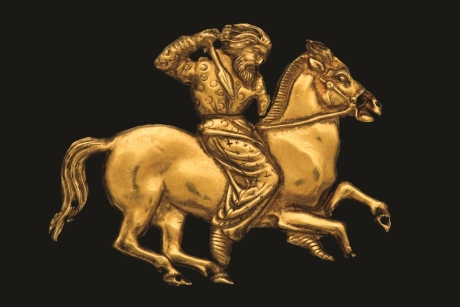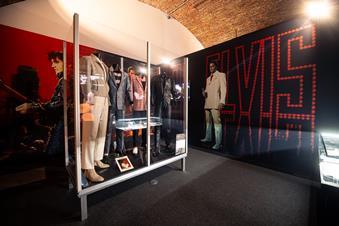
Scythians, Warriors of Ancient Siberia, is a new exhibition recently opened at the British Museum in London.
Running until 14th January, the exhibition explores the story of the Scythians – nomadic tribes and masters of mounted warfare, who flourished between 900 and 200 BC.
The Scythians thrived in a vast landscape stretching from southern Russia to China and the northern Black Sea, were exceptional horsemen and warriors, and feared adversaries and neighbours of the ancient Greeks, Assyrians and Persians between 900 and 200 BC.
The new exhibition will tell their story through ‘exciting archaeological discoveries and perfectly preserved objects frozen in time’.
The British Museum reports the displays to be the first to explore the Scythians in the UK in 40 years. Many of the objects on display date back over 2,500 years, and are well-preserved as they come from burial mounds in the high Altai Mountains of southern Siberia, where the frozen ground prevented them from deteriorating.
What can you see during a visit?
Over 200 objects will reveal all aspects of Scythian life, including a loan in collaboration with the State Hermitage Museum, St Petersburg, and other loans from the National Museum of the Republic of Kazakhstan, the Ashmolean Museum and the Royal Collection.
Some are ‘star pieces’ which are displayed in the permanent galleries, while others have never been loaned to the UK before. Objects preserved by the permafrost include multi-coloured textiles, fur-lined garments and accessories, horse headgear and tattooed human remains.
Gold jewellery, gold applique to adorn clothes, wooden drinking bowls, and a highly decorated leather bag containing preserved lumps of cheese that are over 2,000 years old are further highlights to be expected.
Special group rates are available; GTOS should call 020-7323 8181 to enquire about bookings.
For further information visit www.britishmuseum.org/scythians
Pictured: A gold plaque depicting a Scythian rider with a spear in his right hand. (Photo credit: The State Hermitage, St Petersburg, 2017. Photo V Tereben).













